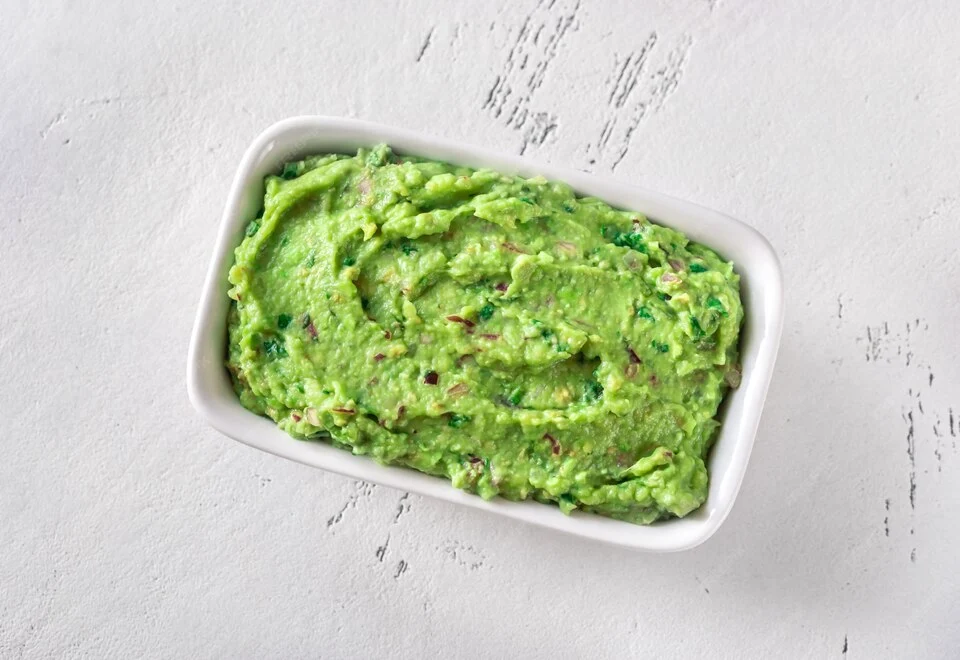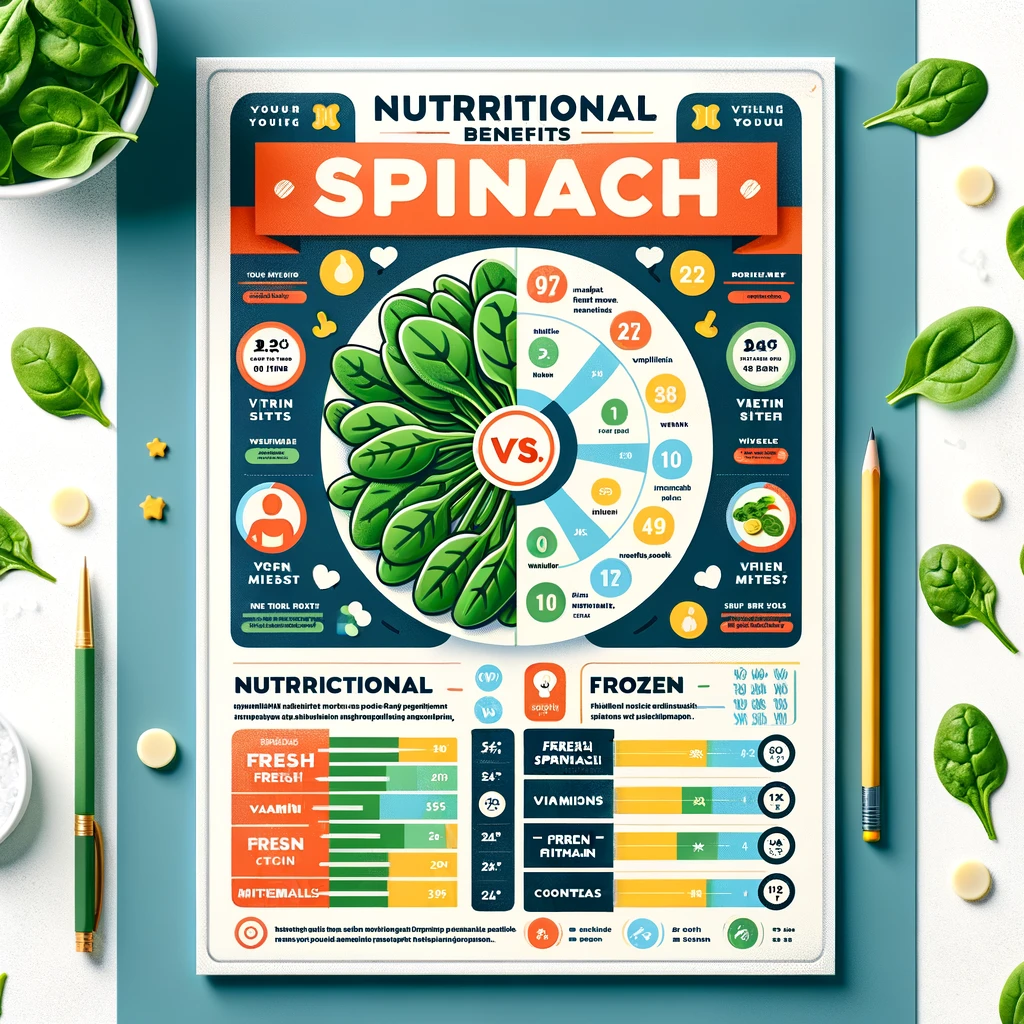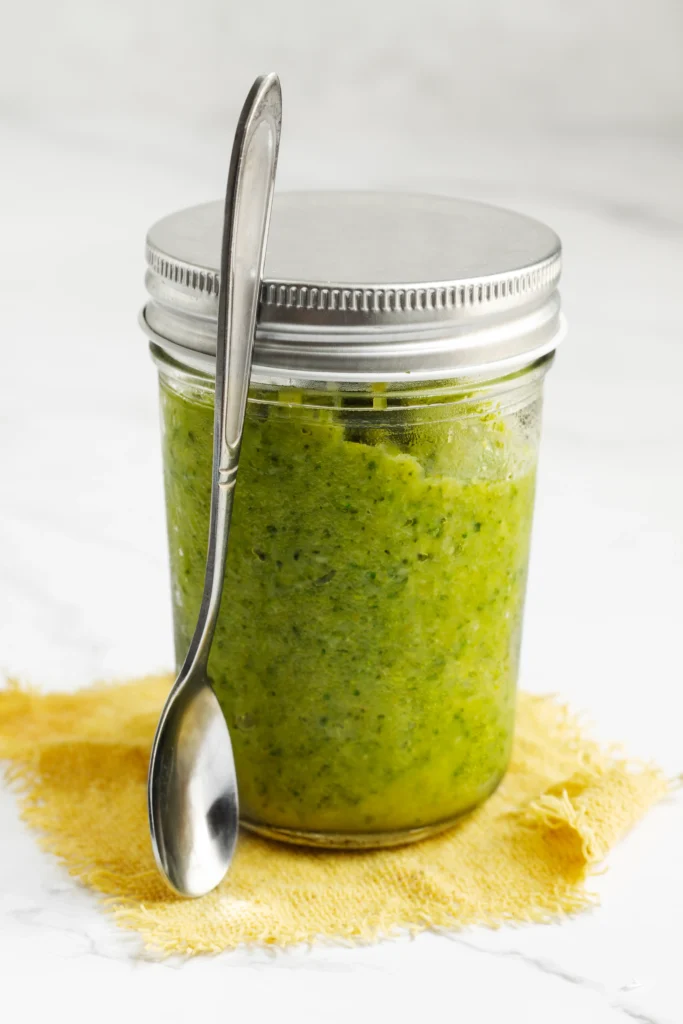In the realm of culinary delights, frozen spinach emerges as a key player, especially when it comes to making dips. However, a pivotal question often arises: Does frozen spinach have to be cooked for dip? This article aims to unfurl the layers of this query, exploring the nutritional aspects, safety concerns, and culinary practices associated with frozen spinach. Let’s embark on a journey to uncover the truth behind the question: Does frozen spinach have to be cooked for dip?, ensuring that your culinary creations are not only delectable but also safe and nutritious.
Does Frozen Spinach Have to Be Cooked for Dip?” – Your Ultimate Guide

Cooking Frozen Spinach for Dips: Essential Safety Tips
Wondering if frozen spinach needs cooking for dips? It’s not just handy; it’s nutrient-rich. Blanching and freezing lock in vital nutrients. This makes frozen spinach great for dips.
The Truth About Frozen Spinach and Dips: To Cook or Not to Cook?
Addressing the question, Does frozen spinach have to be cooked for dip?, is essential in debunking common myths surrounding frozen spinach. Many assume that since frozen spinach undergoes a blanching process, it’s ready to use straight out of the bag. However, this isn’t the case. Despite the initial blanching, frozen spinach must be cooked thoroughly to ensure it’s safe for consumption, particularly when used in dips. This cooking step is vital for eliminating potential bacteria, enhancing the spinach’s flavor, and making your dips not only tasty but also safe to enjoy.
Cooking vs. Raw: Ensuring Safety in Spinach Dips
Addressing the common query, Does frozen spinach have to be cooked for dip?, requires dispelling a prevalent myth. Despite undergoing a preliminary blanching process, you must cook frozen spinach to ensure its safety for consumption, especially in dips. This step is vital to eliminate potential bacteria, thereby not just enhancing the spinach’s flavor but also safeguarding your health.
As we peel back the layers on the use of frozen spinach in dips, it’s evident that cooking it is not just a recommendation but a necessity. This practice ensures that every dip you make is not only packed with flavor but also meets the highest standards of food safety and nutrition. Keep this guide handy as we dive deeper into the world of frozen spinach, unlocking the secrets to perfecting your culinary creations.
Preparing Your Frozen Spinach the Right Way for Dips
From Freezer to Table: Prepping Frozen Spinach for Your Dip Recipes
When you prepare frozen spinach for your dips, you start by understanding its journey from farm to your kitchen. The process involves blanching the spinach in boiling water briefly, then rapidly cooling it down. This method deactivates enzymes that could otherwise degrade the spinach. Following this, a quick freeze locks in the nutrients, preserving the spinach’s color, texture, and flavor for your dips.
Ensuring Your Frozen Spinach is Dip-Ready: Cooking Best Practices.
Contrary to common belief, you cannot use frozen spinach straight from the bag in your dips. Even though the initial blanching kills some bacteria, it doesn’t ensure that all potential pathogens are gone. Cooking frozen spinach thoroughly before adding it to dips is crucial. This step ensures any remaining bacteria are destroyed, making the spinach safe for consumption. Moreover, this extra cooking step enhances the texture and flavor of the spinach, elevating your dip to the next level.
By actively engaging in the preparation of frozen spinach, you ensure not only the safety of your dishes but also their taste quality. The process from blanching to freezing, and ultimately cooking, prepares the spinach perfectly for inclusion in any dip recipe, answering the critical question: Does frozen spinach have to be cooked for dip? Yes, and doing so ensures your dishes are both delicious and safe.
Ready-to-Eat Misconception: Cooking Frozen Spinach for Dip Safety
Cooking frozen spinach before incorporating it into dips is not just a recommendation; it’s a necessity for safety. This step ensures that any remaining bacteria, which could have survived the freezing process or have been introduced during packaging, are destroyed, making the spinach safe for consumption. Moreover, cooking enhances the texture and flavor of the spinach, making your dips more enjoyable.
Addressing the myth of frozen spinach being ready-to-eat and why cooking is crucial for dip preparation.
Understanding the preparation process and recognizing the importance of cooking frozen spinach is crucial, especially when integrating it into dips. It ensures that your culinary creations are not only delicious but also safe for everyone to enjoy. As we delve deeper into the nuances of using frozen spinach, keeping in mind the question, Does frozen spinach have to be cooked for dip?, allows us to appreciate the importance of safe food handling practices in creating nutritious and enjoyable dishes.
Nutritional Showdown: Fresh vs. Frozen Spinach in Dips

Frozen Spinach in Dips: Comparing Nutritional Value
Is fresh spinach better than frozen for dips? Not necessarily. Frozen spinach often retains more nutrients thanks to quick freezing. It can be as nutritious as fresh for your dips.
Opting for Frozen: Why Frozen Spinach May Be Your Best Bet for Dips
Deciding between fresh and frozen? Frozen spinach offers convenience and consistent quality. It’s ready when you are, making dip preparation easier and often more nutritious.
Choosing Spinach for Dips: Frozen for Convenience and Health
So, next time you’re navigating the grocery store’s verdant aisles, give that freezer section a second glance. The bags of frozen spinach aren’t just convenient; they’re compact vessels of nutritional treasure, ready to bolster your diet with their well-preserved benefits.
Guiding on selecting frozen spinach for its health benefits and convenience in making dips.
Choosing frozen spinach for its health benefits and ease in making dips can simplify your kitchen adventures. Frozen spinach matches, or even surpasses, fresh spinach in nutritional value. This makes decision-making easier when you’re aiming for healthful eating.
Using frozen spinach means you’re not sacrificing health for convenience. Whether it’s for a dip, a sauté, or a smoothie, you’re adding a nutrient-rich ingredient to your meals.
Frozen spinach stands on par with fresh spinach, offering a dependable and nutritious option for your cooking needs. This knowledge enables us to choose wisely for our health, taste, and convenience, making our meals both nourishing and enjoyable.
As we delve deeper into our exploration of spinach, remember that the choice between fresh and frozen is more than just about flavor or ease. It’s about leveraging the nutritional value of spinach, in whichever form, to enhance our diets and well-being.
Safety First: Cooking Frozen Spinach for Dip Consumption
The Hidden Dangers: Why Skipping Cooking Frozen Spinach for Dips Is a No-Go
Diving deeper into our leafy green exploration, it’s crucial to shed light on a less appetizing aspect of spinach: its susceptibility to bacteria such as Listeria, E.Coli, and Salmonella. These unwelcome guests can find a cozy home in the nooks and crannies of spinach leaves, posing a risk to our health if not properly addressed.
Heat It Up: The Non-Negotiable Step of Cooking Frozen Spinach for Dips
Spinach’s vulnerability to such bacteria is partly due to its growing conditions. Picture this: spinach sprawling under the open sky, where birds and other wildlife roam free. It’s no wonder that leafy greens can become unwitting hosts to these microorganisms, given their exposure to the elements and wildlife.
The Importance of Heat: Making Frozen Spinach Safe for Dips
While blanching is a knight in shining armor for nutrient preservation, it’s not an invincible warrior against all bacteria. This pre-freezing process does weaken the microbial foes, but it doesn’t always vanquish them. That’s where cooking swoops in as the hero, ensuring that any bacteria that have clung on through the freezing process are thoroughly dispatched.
Detailing how cooking ensures frozen spinach is safe to consume in dips.
The stark reality is that frozen spinach, despite its journey through hot water and cold shock, still requires a final thermal treatment before it can be safely consumed. This step is not just a suggestion; it’s a culinary commandment for ensuring food safety.
Freezing and Bacteria: The Cold Hard Facts
It’s a common misconception that freezing can kill bacteria, rendering food safe for consumption straight from the freezer. However, the truth is that freezing merely puts these microorganisms into a state of suspended animation. They’re not gone; they’re just waiting for their chance to spring back to life once thawed.
This understanding underscores the importance of cooking frozen spinach before incorporating it into your meals. It’s a simple yet effective barrier against potential bacterial invaders, ensuring that your dishes are not only delicious but also safe.
Recalls and Food Safety: Learning from Past Mistakes
The history of spinach recalls serves as a cautionary tale, emphasizing the importance of food safety measures. These incidents aren’t just blips on the radar; they’re stark reminders of the risks associated with improper handling and preparation of leafy greens.
By cooking frozen spinach, you’re not just following a best practice; you’re participating in a culture of food safety that prioritizes the well-being of those who partake in your culinary creations. It’s a responsibility that we, as cooks and food enthusiasts, should take to heart, ensuring that every dish we serve is not only a feast for the taste buds but also a beacon of safety.
As we journey through the world of frozen spinach, let’s keep in mind the lessons learned from past recalls and the simple steps we can take to mitigate risks. Cooking isn’t just about transforming ingredients; it’s about safeguarding the health of ourselves and our loved ones, one delicious bite at a time.
Culinary Mastery: Perfecting Dips with Cooked Frozen Spinach
Cooking Techniques That Transform Frozen Spinach into Dip Delights
As we’ve navigated through the icy waters of frozen spinach preparation and the potential perils that lie beneath its frosty surface, we arrive at a crucial juncture: the act of cooking. This isn’t just a culinary step; it’s a vital safety measure, ensuring that what ends up on our plates is not only nutritious and delicious but, most importantly, safe to eat.
For those looking to dive straight into a tried-and-tested recipe that perfectly illustrates the use of cooked frozen spinach in dips, the Knorr Spinach Dip Recipe Guide on JBRecipes.com offers a comprehensive walkthrough. This guide not only showcases a delicious way to incorporate frozen spinach into your dips but also aligns with the safety and nutritional guidelines we’ve discussed.
Follow the Lead: Cooking Frozen Spinach According to the Experts for the Best Dips
Cooking frozen spinach is more than a mere suggestion—it’s a cornerstone of food safety. The heat acts as a purifier, banishing any bacteria that have survived the freezing process. Whether you’re sautéing, boiling, or microwaving, ensuring that spinach reaches the right temperature is akin to giving it a clean bill of health.
Following the Guidelines: Cooking Frozen Spinach According to Experts
Heeding the instructions on the frozen spinach package isn’t just about culinary compliance; it’s about respecting the wisdom of those who’ve brought this green bounty to your freezer. Phrases like “Must Cook Thoroughly” aren’t mere suggestions; they’re directives for your safety. Adhering to these guidelines is a simple yet effective way to shield yourself and your loved ones from foodborne illnesses.
Emphasizing the importance of adhering to cooking instructions for using frozen spinach in dips.
Manufacturers aren’t just covering their bases; they’re sharing crucial information for the optimal preparation of their product. By following these instructions, you’re not just cooking; you’re engaging in a partnership with food safety experts, ensuring that every spinach-infused dish you serve is both safe and satisfying.
Cooking Tips for the Perfect Spinach Dip

Making a standout spinach dip with frozen spinach is straightforward. A few kitchen tips can help you create a dip that’s both delicious and safe.
Cooking the spinach well is crucial. After cooking, squeeze out extra water. This prevents a watery dip. Next, mix the spinach with creamy ingredients like cream cheese or sour cream. Don’t forget herbs and spices for extra flavor. You’ll end up with a nutrient-rich, safe dip that everyone loves.
The path from freezer to table involves ensuring both safety and taste with frozen spinach. Cooking is a key step in making safe, tasty dishes.
Exploring the uses of frozen spinach shows that preparation steps, from thawing to cooking, improve safety and taste. This makes each dish a showcase of our dedication to quality eating.
Cooking Frozen Spinach for Dip Preparation
Frequently Asked Questions
In our leafy quest with frozen spinach, several pertinent questions often arise, highlighting the collective intrigue and caution many share about this versatile vegetable. Let’s address these frozen spinach-centric inquiries to enhance your culinary journey, ensuring it’s both safe and delectable.
- Can you directly eat frozen spinach without cooking it? Definitely not! It’s imperative to cook frozen spinach before consumption to destroy any bacteria. Bypassing this vital step risks food safety, particularly when frozen spinach finds its way into dips, dishes, or any recipe.
- What’s the best method to thaw and cook frozen spinach? To maximize safety and maintain quality, cook frozen spinach straight from its frozen state when possible. If thawing is necessary, do it in the fridge, a cold water bath, or microwave it on the defrost setting. Immediately cook it after thawing to prevent bacteria from thriving, ensuring it reaches a safe internal temperature of at least 165 degrees Fahrenheit.
- How can you tell if frozen spinach is no longer good? Be vigilant for signs like discoloration, unpleasant smells, or a slimy feel, which suggest frozen spinach may have spoiled. Also, a bloated package or evidence of thawing and refreezing means it’s best to discard the frozen spinach to avoid health risks.
Addressing Common Queries: Preparing Frozen Spinach for Safe and Tasty Dips
Now, with a clearer understanding of these FAQs, you’re better equipped to safely incorporate frozen spinach into your culinary repertoire. Remember, cooking frozen spinach isn’t optional—it’s essential for both delicious and safe consumption.
Conclusion: The Verdict on Cooking Frozen Spinach for Dips
The Final Scoop: Why Cooking Frozen Spinach is Essential for Dips
Our exploration has underscored the importance of never bypassing the cooking process for frozen spinach. This crucial step is the gateway to enjoying all the healthful benefits frozen spinach offers without compromising on safety.
Summarizing the importance of cooking frozen spinach for the safety and taste of dips.
In wrapping up our frozen spinach narrative, it’s evident that frozen veggies, especially frozen spinach, are invaluable to our diets. They offer unmatched convenience, nutrient preservation, and year-round availability. By adhering to the recommended cooking practices, we unlock the full potential of frozen spinach, establishing it as a cornerstone of healthful, worry-free cuisine.
So, whether blending it into a hearty dip or folding it into a savory ensemble, let the insights from our frozen spinach dialogue guide you. Cooking frozen spinach not only mitigates health hazards but also amplifies its nutritional and gustatory profiles.
Ultimately, our diligence in preparing frozen spinach mirrors our dedication to fostering well-being through our dietary choices. Let’s continue to cook, savor, and celebrate the wonders of frozen spinach, making every dish a testament to our commitment to nutritious, safe, and joyful eating.

2 thoughts on “Does frozen spinach have to be cooked for dip? Guide”